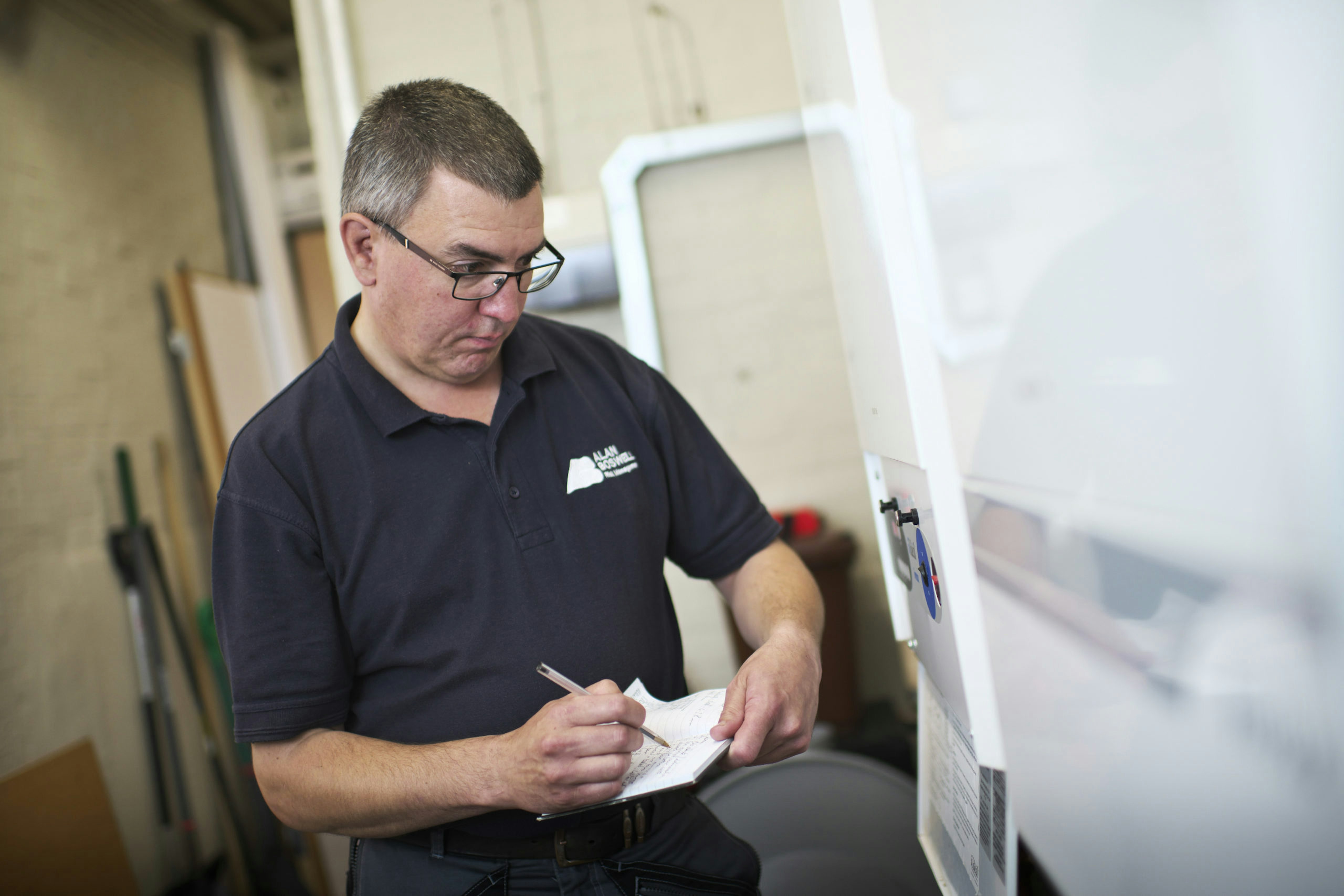Guide to DSE risk assessments
By Alan Boswell Group

No matter the industry you operate in or the size of your business, it is likely that your employees will use Display Screen Equipment, or DSE. Laptops, computers, mobile phones and tablets are all DSE, and businesses are responsible for the health and safety of employees while using these devices as part of their working day. DSE regulations are in place to protect users from common health issues, including back pain, eye strain and repetitive strain injuries. Every company who has employees that use DSE is required by law to complete regular DSE assessments as part of their risk management strategy.
In this guide, we share everything you need to know about DSE regulations and how to ensure you are protecting your employees and staying compliant.
What is a DSE assessment?
A DSE assessment is a type of risk assessment to help identify potential hazards and keep your team safe while at work. For the majority of businesses, a DSE assessment is required for laptop and computer use, but it could also include television screens, CCTV screens or touch screens.
DSE refers to any device which has a display screen, so it covers a huge range of equipment. Almost all employees use DSE in one way or another and anyone who does must complete a DSE assessment. DSE regulations state that every member of staff who uses a display screen for more than one hour a day must complete a DSE self-assessment.
During a DSE assessment, the way the screen is used by the employee is carefully assessed and any possible risks are identified. The aim of the assessment is to make sure that all team members have the guidance, facilities and equipment they need to complete their jobs safely. Despite the name DSE assessment referring specifically to screens, this actually evaluates the entire workstation. It includes furniture, such as a chair and desk, as well as other equipment such as a keyboard and mouse. Temperature, lighting, noise levels and humidity are all also considered during a DSE self-assessment. You can learn more about DSE assessments and workstations on the UK Government website.
Why are DSE risk assessments important?
Providing staff with adequate DSE training and a thorough assessment of their workstation is critical. Not only is it a legal requirement for employers, but it brings many business benefits as well. Failing to comply with these regulations can leave you open to legal action from employees and puts your business and your team at risk.
Incorrect use of DSE, coupled with a workstation which is not properly set up, can result in back, neck and shoulder injuries. Other common risks are fatigue, eye strain and migraines. DSE assessments can help to improve performance levels from your staff and safeguard employee health. Complying with DSE regulations can improve your staff’s wellbeing, increase productivity, reduce the risk of injury and minimise absenteeism.
Do you need to complete a DSE assessment when working from home?
Yes, even when employees are working from home their employer is still responsible for completing a DSE assessment. More employees are working from home now than ever before. And, many people were forced to take up home working without any prior notice, so workstations might not be fit for purpose. Workstations which are set up in a regulated office environment are generally more likely to be suitable and safe, compared with home working locations. This makes DSE assessments for working from home even more important because the risks are likely to be higher, but the responsibilities and risk of legal consequences remain the same for the business.
What do DSE regulations cover?
DSE regulations cover everything from posture when working, to the equipment itself. The most common aspects included in a DSE checklist are:
Monitors or screens (including glare and reflection)
Mouse
Keyboard
Tablets
Smartphones
Furniture including desks and chairs
Lighting and reflections
Temperature and humidity
Background noise
How to complete a DSE risk assessment?
It is essential that your business completes DSE training and assessments properly for all employees, no matter where they work from. The key steps of a DSE assessment are:
Identify hazards.
The first thing to do is identify all of the potential hazards in a workstation. This can be done either as a workplace observation or as a DSE self-assessment completed by your staff members. You need to identify all possible hazards, focusing on equipment and the environment. Once hazards have been identified, you need to understand who will be affected by them. This might be just one employee if each person has their own desk, or multiple team members if you have a hot desk policy.
Evaluate the risks.
After identifying the DSE risks, you need to evaluate them. Determine if they can be completely eliminated, and if not, how you can control them to reduce the hazard for employees. This could involve improving equipment, reorganising the workstation, or providing DSE training to staff.
Record and implement.
For the DSE assessment, you need to have a record of your findings. In these records you must demonstrate the checks have been completed and any hazards identified have been dealt with accordingly.
Review and update.
DSE regulations state that an assessment should be completed on a regular basis. Most companies do this once a year and you should consider any changes that may have occurred to the DSE. Take into account any new equipment, employee feedback or new team members. DSE risk assessments are an important aspect of ensuring your employees are safe and comfortable. Routine risk assessments are also key to making sure that any potential hazards are identified early and mitigated to avoid any negative consequences. To find out more about DSE risk assessments and health and safety in the workplace, speak to Alan Boswell Risk Management on 01603 967900, or you can download our handy guide here.
Need help with your insurance?
To find out more about DSE risk assessments and health and safety in the workplace, speak to Alan Boswell Risk Management on 01603 967900, or you can download our handy guide here.
Send an enquiry
Related guides and insights

Guide to supply chain risk management and insurance
An organisation’s supply chain greases the wheels of its entire operation, and one broken cog can bring the whole thing grinding to a halt. In this guide, we explore the types of risk, the importance of supply chain risk management strategies, and how insurance can help to protect the smooth running of your business.

Five reasons why you should use a risk management company
The COVID-19 pandemic has shone a spotlight on business Health & Safety. Read on for five reasons why appointing a specialist risk management company can keep your people and business safe.

What is a risk assessment?
A good risk assessment can help you prepare for hazards and minimise the financial burden. Here’s why overlooking its importance can leave your business vulnerable.
